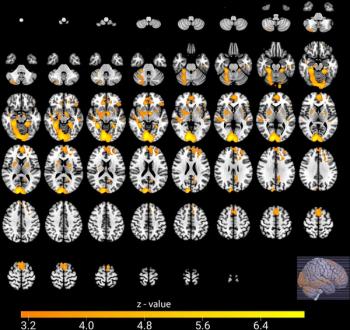
MRI May Predict Visual Hallucinations in Parkinson’s Disease
MRI may help physicians identify patients with Parkinson’s disease who may develop visual hallucinations.
Functional MR imaging (fMRI) may help predict development of visual hallucinations in patients with Parkinson’s disease (PD), according to a study published in
Researchers from the Netherlands performed a small retrospective study to assess the pathophysiological mechanisms of visual hallucinations among patients with PD by analyzing whole-brain resting-state functional connectivity in PD patients with visual hallucinations, patients without visual hallucinations, and control participants.
“Visual hallucinations in Parkinson’s disease are frequent and debilitating,” co-author Dagmar H. Hepp, MD, from the Department of Neurology and the Department of Anatomy and Neurosciences at VU University Medical Center (VUMC) in Amsterdam, said in a release. “Our aim was to study the mechanism underlying visual hallucinations in Parkinson’s disease, as these symptoms are currently poorly understood.”
Fifteen patients with hallucinations, 40 patients without and 14 controls participated in the study. All underwent fMRI. Functional connectivity was calculated between 47 regions of interests, of which whole-brain and region-specific means were compared by using a general linear model with false discovery rate control for multiple comparisons.
The results showed that whole-brain mean functional connectivity was significantly lower in patients with PD compared with controls, with regional decreases involving paracentral and occipital regions in patients with PD both with hallucinations and without. Among the patients, with hallucinations, nine additional frontal, temporal, occipital, and striatal regions showed decreased functional connectivity compared with the controls. The resting-state functional connectivity was unrelated to motor performance and related to cognitive deficits such as attention and perception.
“We found that the areas in the brain involved in attention and visual processing were less connected to the rest of the brain,” co-author Menno M. Schoonheim, PhD, from the Department of Anatomy and Neurosciences at VUMC, said in the release. “This suggests that disconnection of these brain areas may contribute to the generation of visual hallucinations in patients with Parkinson’s disease.”
Newsletter
Stay at the forefront of radiology with the Diagnostic Imaging newsletter, delivering the latest news, clinical insights, and imaging advancements for today’s radiologists.


























